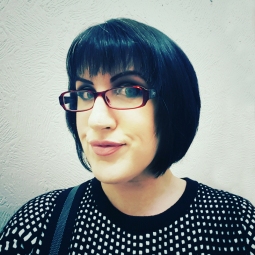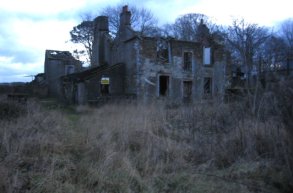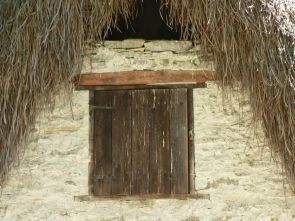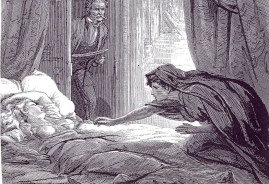 Over the next month or so I am trying to finish my book so I can do the underwear eating exercise of handing my book baby to beta readers, *gulp*. I wanted to keep to two posts a week, but couldn’t with all the extra writing. So a few lovely friends have offered to step in and take the reigns for some of the posts. Be nice, play gentle and happy clappy rounds of applause please.
Over the next month or so I am trying to finish my book so I can do the underwear eating exercise of handing my book baby to beta readers, *gulp*. I wanted to keep to two posts a week, but couldn’t with all the extra writing. So a few lovely friends have offered to step in and take the reigns for some of the posts. Be nice, play gentle and happy clappy rounds of applause please.
Today the lovely Icy Sedgwick, who came to the Bloggers Bash 2016 is talking to us about an area of her expertise: gothic stories. Icy is studying a PhD in film studies looking at space in haunted houses, so she really does know a thing or two about this.
If you want to know some neat little tricks to perfecting gothic tales, check out Icy’s tips below:

Our lovely Icy
You can find Gothic stories in some form or another right through history. But as a genre, you have to go to 1764 to find the first novel, Horace Walpole’s The Castle of Otranto. Since then, Gothic has given us Frankenstein and his Creature, Dr Jekyll and Mr Hyde, Dorian Gray, Dracula, Melmoth the Wanderer, Lord Ruthven, Sweeney Todd, and many more.
It’s never really gone away, though its popularity goes up and down depending on the society of the time. It’s had a recent boom in interest through the ‘dreadpunk’ genre, spawned from TV shows like Penny Dreadful, and Stranger Things brought a taste of the Gothic to Netflix.
It’s a really fun genre (well to write, not necessarily to read), and it is well worth having a go if you’re into all things dark, spooky, or just not-quite-right.
There are loads of characteristics to the Gothic as a genre, but what 3 things make an awesome Gothic story if you’re just starting out?
ONE – INTERESTING SPACES
Space is crucial to the Gothic. On one hand, you’ve got your stereotypical crumbling castles, isolated manor houses, and creaky cabins in the wood. On the other hand, you’ve got dilapidated apartments in modern cities, suburban duplexes and even hospitals.
In some ways, it’s even creepier if the weird stuff happens somewhere totally normal. It can also be funnier – see What We Do In The Shadows (2014).
Think of the spaces as being the world building you’d do in fantasy or sci fi. What does it look like? Sound like? Smell like? Is there an atmosphere?

By John Holmes, CC BY-SA 2.0, here.
And think smaller. Look at the parts of the building. A haunting might affect the whole building, but it’ll always start in one particular room. Is there a weird stairwell in a block of flats? A cupboard no one will use?
Look at your own life. Everyone has a space they never liked, but couldn’t figure out why. I still don’t like walking under our loft hatch on the upstairs landing.
In The Skeleton Key (2005), Kate Hudson’s character finds a locked room in the attic. In The Conjuring (2013), clues hide in the wall spaces, as well as the basement. Ghostwatch (1992) made good use of the cupboard under the stairs.
Those spaces are the ones where the magic happens.
TWO – BURIED SECRETS
Spaces are super important to our next element – the buried secret. You need somewhere to put it, right?
Whether it’s a portrait in the attic, a long lost twin, a torture chamber under the stairs, or a skeleton bricked up in the outhouse, your story needs a buried secret. It doesn’t have to be literally buried, just hidden in some way.
At their heart, Gothic narratives are about investigating a mystery. The classic stories often feature heroines prying into locked rooms, or exploring winding corridors. Jane Austen even parodied the Gothic novels of Ann Radcliffe in her own Northanger Abbey (1817).
More recently, you have characters investigating the history of a house to explain a haunting. In The Others (2001), a photograph in a servant’s room unlocked the mystery. Even in Poltergeist (1982), there are buried secrets – quite literally under the house!
You don’t need skeletons to burst through the floor, but you do need your characters to make some kind of discovery.
The heroes want to uncover the secret, and the villains want to keep it hidden. Check out Stir of Echoes (1999) for this concept put very, very literally. And speaking of villains…
THREE – MONSTERS – FIGURATIVE AND LITERAL
You need villains. They nearly always take the form of a monster, but that’s not to say they should be Boris Karloff clones.
Gothic literature (and later, cinema) has given us some of the best monsters in popular culture. Frankenstein’s Creature, Dracula, the Wolf Man – there would be no Supernatural or Buffy the Vampire Slayer without them.

By Scott Wylie from UK – GhoulUploaded by Markos90, CC BY 2.0, here.
You’ve really got three kinds of monsters.
The accidental monster
This is your Wolf Man, or your Creature. Ghosts sometimes fall into this category, especially if they died at the hands of someone else.
The monster didn’t ever intend to be that way. They’re sympathetic in a lot of ways, but essentially they still have to be destroyed by the end of the story.
The intentional monster
Think Dracula. They’re out for what they can get, and the hero/heroine is about to get in their way. But the monster doesn’t always have to be an obvious thing. A lot of people argue that the house in Shirley Jackson’s The Haunting of Hill House (1959) is the real monster of the story.
The figurative monster
These are the monsters who aren’t the ones who hide under your bed. Vincent Price’s Witchfinder General or Hannibal Lecter are good examples. The Gothic isn’t just about monsters and demons. At its heart, it’s about the battle between darkness and light. It’s often referred to as the primitive opposed with the civilised.
So how does your figurative monster represent the primitive?
No matter which monster you choose, just remember that whatever they want is just as important as whatever the hero wants. It’s the conflict between those competing desires that creates the tension.
Putting it all together
So now you’ve thought of your fascinating space. You have to figure out how to isolate it from its surroundings. Maybe you’ve picked an apartment building, and your heroine is a new tenant who doesn’t know anyone yet. Look at The Shining (1977) – the Overlook is literally cut off in the winter when the snow comes.
Think up the backstory for your space. How does it relate to the villain? What did they do there, or what do they want to do there?
Now you have your space, you understand its history, and it’s cut off in some way. What are you going to hide in it? Choose something logical but maybe choose an out of the way hiding spot. It’s rare that a Gothic heroine finds herself investigating a kitchen (unless you find Zuul living in your refrigerator).
So how does your secret tie to your monster? And what will the monster do when the heroine starts investigating?
Eeek the tension!
I hope you’ve found this helpful, and that you’re going to have a go at writing a Gothic story! Remember, atmosphere is everything, and you don’t need to add gore unless you want to.
Happy Haunting!
About Icy
Icy Sedgwick is a writer, as well as Gothic Studies scholar specialising in Film. She blogs about folklore and speculative fiction here because it gives her an excuse to poke around in old graveyards! If you enjoy weird tales of ghosts and goddesses, you can get a free copy of her Harbingers: Dark Tales of Speculative Fiction short story collection here. Find her on Twitter @IcySedgwick or drop her a line at icy@icysedgwick.com.



Reblogged this on Chris The Story Reading Ape's Blog.
LikeLike
Thanks Chris, massively appreciate it
LikeLiked by 1 person
Welcome Sacha 👍😃
LikeLiked by 1 person
I’ve been doing some work around fairy stories and this will help fill out the dark underbelly. Thank you!
LikeLiked by 1 person
No probs good luck with your story 🙂 thanks for reading
LikeLike
Best of luck!!
LikeLiked by 1 person
All of these tips are fantastic motivators for me as I’ve been trying to focus on writing gothic mysteries/horror. Atmospheric storytelling, richly textured scenes, and nuanced characters – all of these have great appeal to me in reading and writing. I especially love the interesting spaces aspect. The residence, city, narrow alley, etc., becomes another character as well.
LikeLiked by 1 person
So glad you like them Icy is a wealth of knowledge when it comes to this stuff 😀 Good luck with your story and I think you are right about the spaces becoming characters on their own.
LikeLike
In a lot of ways the places are often the real stars!
LikeLiked by 2 people
I am totally in the house is the real monster camp in the Haunting of Hill House.
Great tips here – especially the one about world building on a micro scale. My neck hairs almost always rise when an author takes the time to describe the sound and scents around a hidden place. It always make me wonder what the character isn’t seeing to have those heightened senses.
LikeLiked by 1 person
I do not watch scary movies! EVER my imagination is WAY not okay with it! lol
LikeLiked by 1 person
I used to watch a ton of them. I still like a good scare from time to time, but not the kind that are all gore and shock.
LikeLiked by 1 person
That’s a resounding no from me! I wouldn’t sleep for a month
LikeLiked by 1 person
And a hero/heroine with no common sense whatsoever.
There is a storm coming on, they could leave for a nearby town, but naturally they decide to go to the dark, dangerous house they have been warned about. They could wait for daylight and good weather but no.
LikeLiked by 2 people
haha that is so so true!!! but if they weren’t a little dumb then there would be no story!
LikeLike
Yes, the foolish moves part of the story can be infuriating at times but it is a necessary plot construct. I spent 3 hours this morn finishing The Girl in Cabin 10 by Ruth Ware (very good book!) and wanted to yell out loud at some of the heroine’s decisions, haha. In this book there is definitely a strong element of “place” becoming a dominating aspect of the story too, which I loved.
LikeLike
This isn’t my genre specifically, but great ideas in here that will cross over to fantasy 🙂 I enjoyed the post!
LikeLiked by 1 person
Nor mine, but I reckon lots of elements transfer – like the fact its got me thinking about setting more 😀
LikeLiked by 1 person
Gothic plays well with sooooo many other genres 😀
LikeLiked by 1 person
The biggest challenge for me with writing gothic mystery/horror is how difficult it is to get around the technological stuff. Cell phones, wif-fi, GPS, etc. Today’s modern world realities remove a lot of the atmospheric potential, at least for me. You have to create dead zones, no connection/service plot points which in today’s world might come off as contrived or too convenient. I also don’t necessarily want to write stories taking place long before technology became commonplace, because that’s a whole side area of research to get details correct that kind of dampens my enthusiasm. I’m still in a quandary about this with a couple of stories I’m currently working on. Someone suggested leave the technology out, but don’t placeholder with anything else that gives the reader an idea of the exact time frame (easier said than written). Wouldn’t that fall into a “fantasy” area? A most troubling stumbling block, which keeps me procrastinating. Write for today’s world? Write for a decade/time frame before technology made life more connected and streamlined? Go nebulous/vague fantasy time period? Might be a good topic for a future post.
LikeLike
There can be simple ways to deal with technology. Isolated settings knock out most cell phones and power outages get rid of wifi. But you have to remember that living in a technological society means a lot of peopke wouldn’t notice anything paranormal until it escalated.
The Poltergeist remake did a pretty good job of bringing technologt into the story, and it’s actually pretty fundamental to some stories.
If you set your story even in the late 1990s you can sidestep a lot of the technology. Or you can do what I do and set stories in a historical era. Technology isn’t infallible either, so say your heroine tries to film what’s happening in her house. Wouldn’t that be more creepy when she tried to show the video to someone and it showed up blank?
LikeLike
Excellent perspective, thank you. I get a little too hung up on “will it read as too contrived” but I need to just write and let an editor tell me that instead of fretting and not writing!
LikeLike
Yes! Just enjoy it 🙂
LikeLike
Nice article. It was very informative Icy. ^_^
LikeLike
Thanks!
LikeLiked by 1 person
Oh I do hope you get your book finished and don’t have to eat your underwear!
Thanks for introducing us to Icy and her suggestions for writing Gothic Tales. Interesting. 🙂
LikeLiked by 1 person
Hahah, I will I’m determined! Thanks for stopping in Norah 🙂
LikeLiked by 1 person
Great post from Icy. Nice to learn tricks about writing in different genres. 🙂
LikeLiked by 1 person
I couldn’t agree more there’s always something transferable 🙂
LikeLiked by 1 person
I agree with Sacha – and the Gothic appears in sooooo many different genres so there’s always something you can use!
LikeLiked by 1 person
Fact! 🙂
LikeLiked by 1 person
Thank you for this post. I have loved Gothic horror since I was little and adore the genre.
LikeLiked by 1 person
Ahh awesome, well I know Icy will be glad to hear that 😀
LikeLiked by 1 person
🙂
LikeLike
We’ll get Sacha loving it too 😉
LikeLiked by 2 people
haha :p
LikeLike
I wish it was as easy for me as it seems to be for her
LikeLiked by 1 person
Icy is doing a PhD, so I guess she has a wealth of experience to add to her knowledge which is maybe why it seems easy. Icy’s been a writer for a long while too. But if you have any questions I know she will answer them 😀
LikeLiked by 1 person
Thank you. I’m sure her wisdom was hard won.
LikeLike
Read loads! Honestly, the more you read Gothic horror, the more you start to spot how similar things are. It’s not exactly writing a formula, but there are very common ingredients. 🙂 I can recommend some stories to get started if you like 🙂
LikeLiked by 2 people
I read a lot. You’re right – there are formulas that are most evident in the worst books.
LikeLike
Did I comment already? Did I comment already? Yup. That’s where my brain is that. I know I read this and tweeted it but now I’m not sure I commented. Anyway, fantastic post. ☠
LikeLiked by 1 person
That’s where my brain is AT, not that. *sigh*
LikeLiked by 1 person